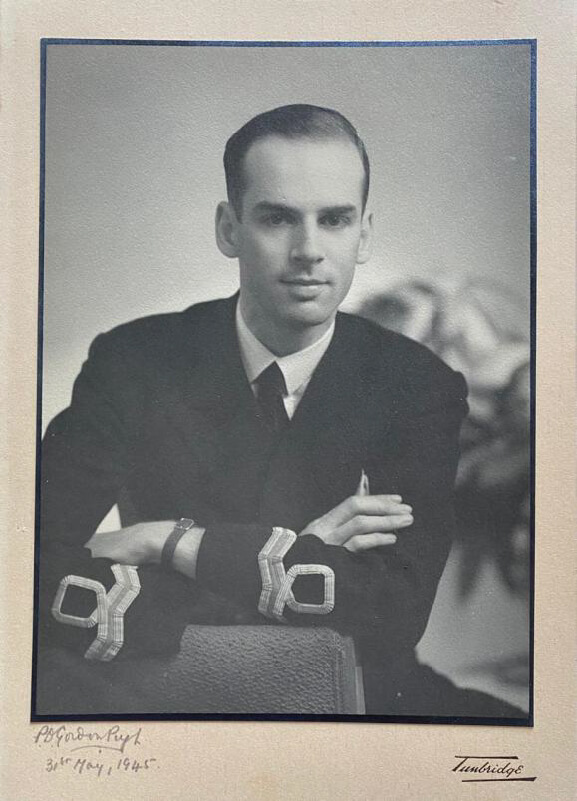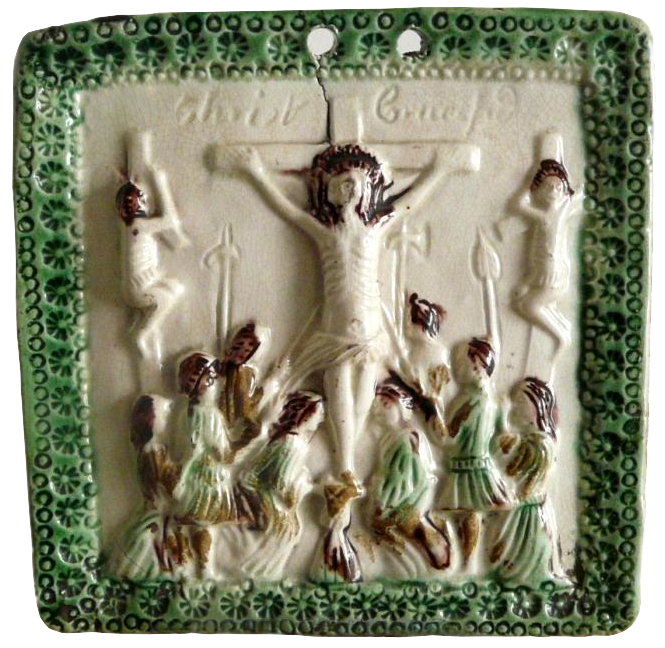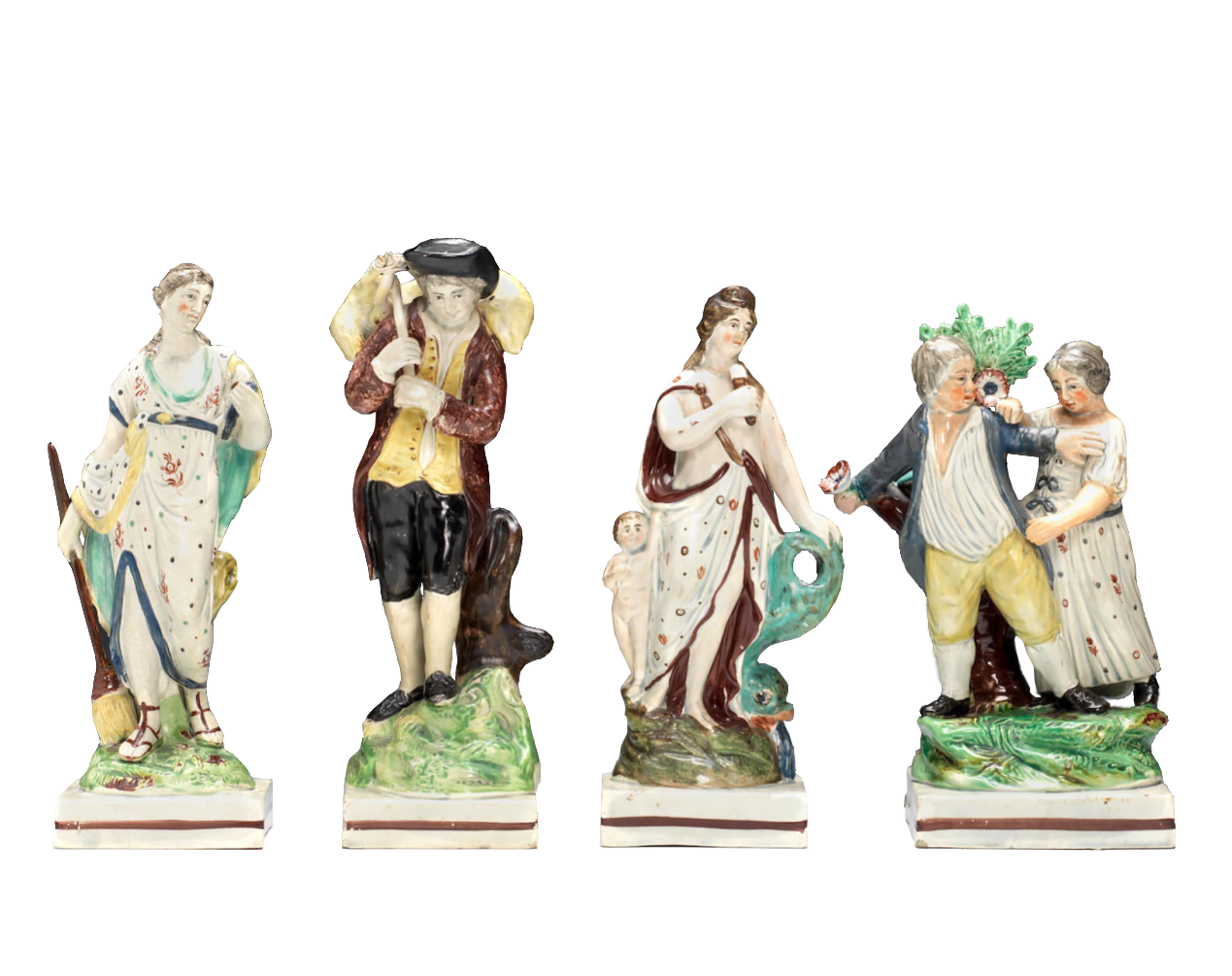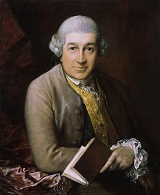
David Garrick (1717-1779) was an English actor, playwright, theatre manager and producer who influenced nearly all aspects of theatrical practice throughout the eighteenth century, and was a pupil and friend of Dr Samuel Johnson.
In 1831 a group of literary and theatrical gentlemen founded a ‘gentlemen’s club’ in London for the general patronage of drama. They named it The Garrick Club after David Garrick. Over its long history The Garrick has included in its membership the writers Charles Dickens, William Thackeray, Anthony Trollope, JM Barrie and Sir Kingsley Amis, the actors Charles Kemble, Sir Henry Irving, Sir John Gielgud, Sir Alec Guinness and Sir Michael Redgrave, the composers Edward Elgar and Sir Arthur Sullivan and the artists John Everett Millais, Frederic Leighton, Dante Gabriel Rossetti and Sir Alfred Munnings. In 1956 the writer A.A. Milne left The Garrick many millions of pounds in his will and today one of its trustees is the actor Sir David Suchet.

As well as a most enviable picture collection The Garrick holds a wonderful collection of 93 theatrical Staffordshire figures, almost all the figures of actors produced. This collection has grown over time as successive members have donated figures to the Club. One of my favourites is the depiction of David Garrick in the role of Richard III. The figure captures a moment just before the battle of Bosworth Field. Having been haunted in his sleep by the ghosts of those he has murdered, he wakes to the realisation that he is alone in the world and death is imminent.
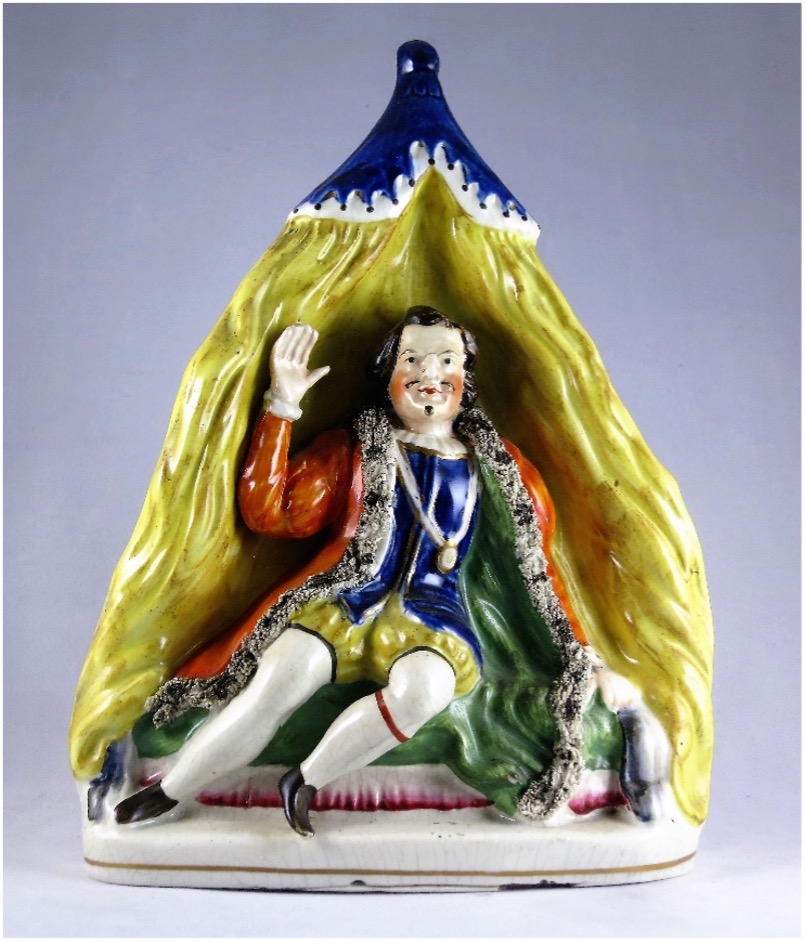
The background to this figure is interesting. In 1745 William Hogarth painted his close friend David Garrick in the role of Richard III. Garrick was known to be a very expressive actor and even a hundred years after the painting, a 1845 satirical print was produced of Hogarth at his easel, attempting to paint Garrick’s face. The caption repeated a well-known anecdote about Hogarth’s difficulties in painting Garrick: “While Garrick sat for Hogarth for his own picture he mischievously altered his countenance so as to render the portrait perfectly unlike,” forcing the artist to start over several times. In the end, Hogarth resorted to painting Garrick’s face on a separate piece of canvas which he then attached on top of the main canvas.


Right: Garrick and Hogarth (1845); satirical print capturing Hogarth’s infamous difficulties in capturing Garrick’s expressive face
Hogarth’s iconic image, the most famous and frequently engraved theatrical portrait of the eighteenth century, was engraved at least fourteen times and even reproduced as a tapestry. Through engravings and popular illustrated editions, such as Bell’s British Theatre and the London Illustrated News, alongside the transfer print process that reproduced images on porcelain and enamel, depictions of Garrick performing his most celebrated stage role reached a broader working-class audience and became the ‘blueprint image’ for subsequent actors and productions.
This painting is undisputedly the original source of the 1850s Staffordshire figure of Richard III, as confirmed by A&N Harding in Victorian Staffordshire Figures,1835-1875, Book One, out of print but often available to buy second-hand at AbeBooks). It is commonly known as ‘David Garrick as King Richard III’, though David Garrick’s name, who by then had been dead for seventy years, does not appear on the titled versions. Were the Staffordshire potters aware of the fabled eighteenth century actor or were they just producing the most ubiquitous image of a popular Shakespearean play? Either way, this figure went on to be produced many times for around fifteen years, between 1850 – 1865, by different potters and in various size and colour combinations.


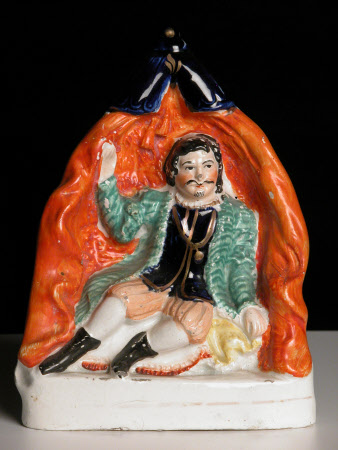

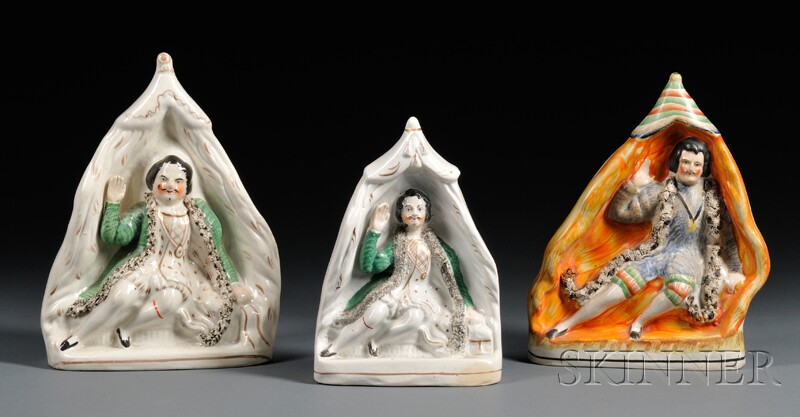
The Garrick has many traditions which are well kept: The Coffee Room (the main dining room) has a ‘Long Table’ surrounded by many ‘Side Tables’ for members who wish to entertain guests in private or have lady guests.
Members dining alone or with a male guest(s) seat themselves at the Long Table immediately next to those who are already seated. This ensures that members will interact with one another. The chair at the head of the table is reserved for the senior actor present that day with a vacant chair next to him in case he has a guest, though I have never been sure who actually determines who is the senior actor there that day in the Club!
There is an area underneath the stairs which is curtained off and is strictly for ‘Members Only’. Then there is the tradition that brown shoes are not to be worn in the Club except on Fridays when it is considered that after lunch members ‘will retire to the country’ for the weekend.
My twin brother Sir Peter Duffell and I celebrated our 80th birthday at The Garrick on 19 June 2019. Peter wore the tie of the MCC (Marylebone Cricket Club) which is the foremost cricket club in the world, based at Lord’s cricket ground in north London. It is rustic red and orangey yellow and is famously known as the ‘Bacon and Egg’ tie. I sported The Garrick tie which is pink and pale green and known as the ‘Salmon and Cucumber’. Eagle-eyed Americans will note that the English striped ties slant in the opposite direction to yours – of course!

Even if you are not a member of The Garrick Club, its collection of Staffordshire is available to view online. Go to https://garrick.ssl.co.uk/home and enter ‘staffordshire’ into the search bar.
For more ‘Garrickomania’ and artistic depictions of David Garrick, see this article by Heather McPherson: https://folgerpedia.folger.edu/Garrickomania:_Garrick%27s_Image
Michael Duffell lives in Chicago with his wife Gisela and they only collect horse figures (except for David Garrick!) of which they have over 200. He is Vice President of the Staffordshire Figure Association.
A shorter version of this article by Michael was originally published in the SFA Winter 2021 members newsletter. Additional research on Hogarth’s painting and its legacy in eighteenth and nineteenth century popular culture by Sarah Gillett 2022.




